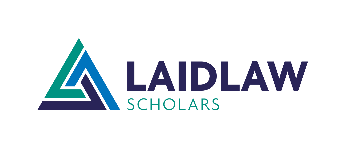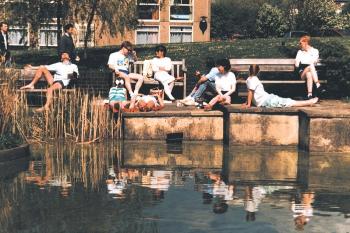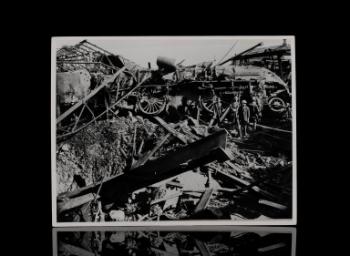‘Modernising the Past’: Laidlaw Undergraduate Research Scholarship
Posted on 22 September 2022

Emily Bowen, BA History 2021-24
In April, I was selected to be one of 25 scholars in the 2022 cohort for the Laidlaw Scholarship. The Laidlaw Undergraduate Leadership and Research Programme invests in the next generation of ethical leadership by funding research experience and leadership development over the course of two years. The first summer is dedicated to a six-week research project supported by an academic supervisor, and results in a final 3000 word essay and research poster.
I wanted my research topic to relate to archives, as I aspire to work with them one day, and felt this would be a good opportunity to increase my exposure to the sector. I economised on my existing voluntary experience in local archives, using this familiarity and the contacts I’d already established to grow my knowledge of the field. The difficulty was finding a strand of research that was both of interest and relevance to me, and related to the brief set out by the foundation to ‘find answers to some of the world’s most intractable problems’. Furthermore, the overwhelming number of STEM projects from previous scholars did little to inspire a historical route of research, but also motivated me to increase the humanities representation within the Laidlaw Scholar catalogue.
I met with Dr Catherine-Rose Hailstone, who agreed to be my academic mentor throughout the programme and was such a big help through this entire process. We brainstormed ideas and came up with the concept of exploring the impacts of digitisation on the accessibility of history for local communities. The focus was on oral histories and a comparison of case studies of the online accessibility of two local archives. I felt this was a particularly important avenue of research in itsrelevance to the online world we found ourselves in during the COVID-19 pandemic, and how this changed how people access the past. Later on in the project, we also decided to focus on the digitisation of photographs to offer another comparison of digitisation.

Students relaxing by the lake, 1980s. Credit: Borthwick Institute for Archives, University of York
Originally the institutions of comparison were going to be the Cambridge Arts Theatre, where I had oral history and archive experience, and the Leonard Cheshire Archive where I had attended a talk. However, once the research process began, I realised that comparing the impact in two different localities would be very difficult, and that I should compare the impact of two institutions on the same local community for consistency. After another brainstorming session, it was decided that I would compare the impact of the digitisation of material held within the National Railway Museum and the Borthwick Archives, both located within York. I would use oral histories and photographs of York railways as well as that provided by the 50 th anniversary webpage for the University of York. The methodology, I decided, would be a survey, completed by local members of the York community, and would assess how their views changed after being exposed to the archival material held online.
Whilst I did have trouble in the number of responses to the survey, despite its advertisement on social media pages and direct emails, the results were still enlightening. It turned out that most of the respondents weren’t even aware they could access archival material online, for free! The majority felt they had learnt something about both institutions after listening to the oral histories and looking at the photographs, but had simply not been aware they were able to explore such materials. The main reason given for this was the relevance to each individual, as although it was all related to York and acted as a part of the community history, it wasn’t relevant to the everyday life of the respondents and so they hadn’t taken the time to explore what was available to them online. In my essay I explore this further, and discuss how community awareness is linked to the accessibility of historical materials.

LNER ‘Sir Ralph Wedgewood’, war damage, York North MPD. April 1942. Credit: Science Museum Group ©The Board of Trustees of the Science Museum
My final essay is entitled ‘Modernising the Past: Impacts of digitisation on the accessibility of historical materials for the local community of York’, and with the supporting research poster, demonstrated the importance of awareness, funding, and motivations for the digitisation of archival
material. I’ll be taking this poster to conferences, my first at LSE this coming October! I’ve thoroughly enjoyed exploring a topic I find so interesting, and hopefully it highlights the importance of local archives in the wider understanding of our own history. I look forward to sharing it with others and hopefully inspiring people to explore the digital archives available for their own communities, especially given the global nature of the Laidlaw Programme.
Thanks again to Dr Catherine-Rose Hailstone for all her help – I couldn’t have done it without her support!
Find out more about the Laidlaw Undergraduate Programme
The University of York 50th Anniversary webpage
The National Railway Museum photographic catalogue
The National Archive of Railway Oral History
